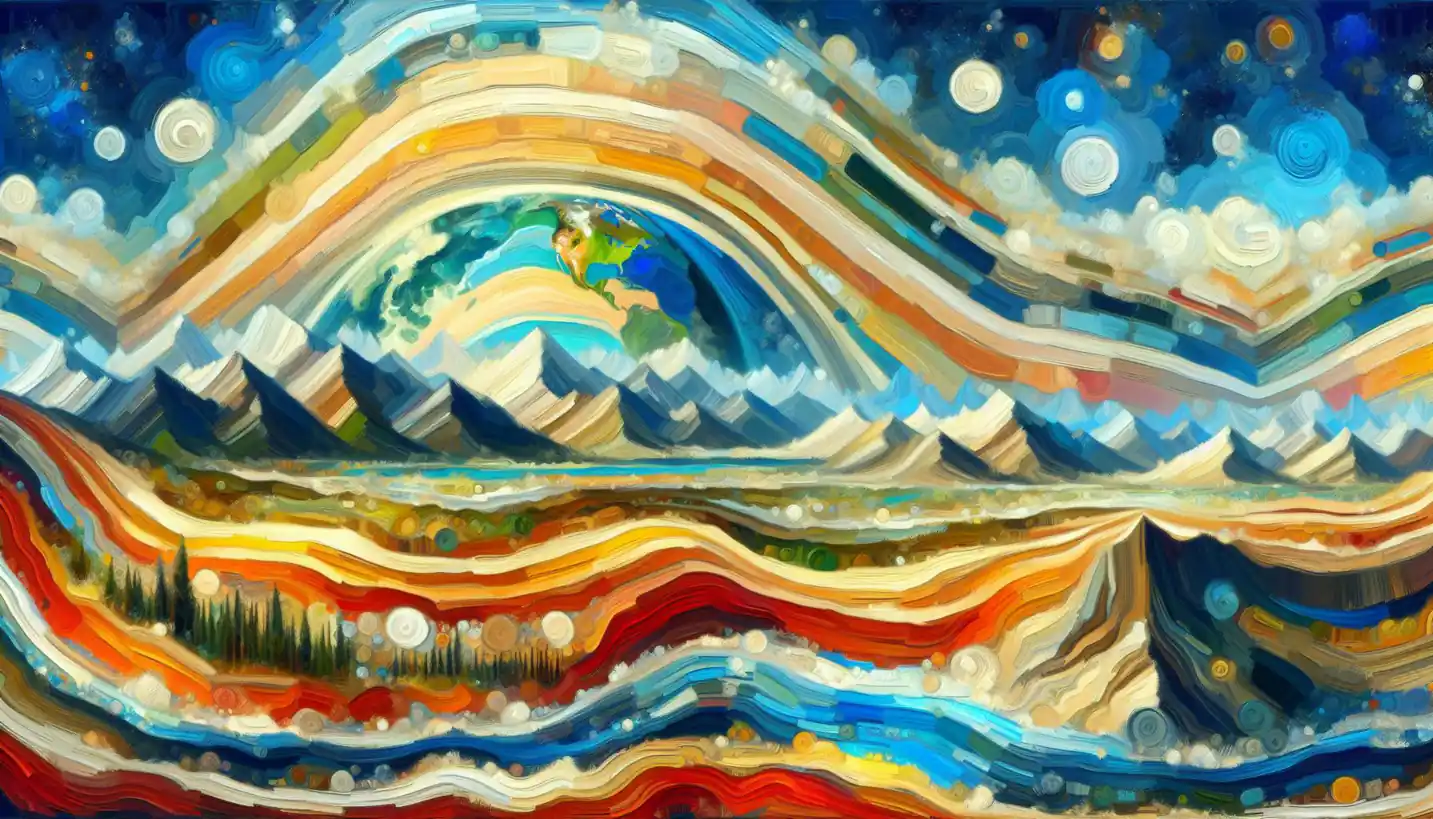· Earth Science · 4 min read
Igneous Rocks: Earth’s Fiery Creations
Igneous rocks, born from molten magma, hold earth's fiery secrets. Discover these geological masterpieces crafted by intense heat and pressure.

Beneath our feet, there’s a hidden world where fire meets stone, and it’s all tied to the wonderful story of igneous rocks. These rocks form when molten material from within the Earth cools and solidifies. Let’s delve into how these fascinating structures come to be and why they hold the secrets to our planet’s fiery past.
The Birthplace of Igneous Rocks
To truly understand igneous rocks, we need to take a trip deep beneath the Earth’s crust. Inside, it’s like a colossal oven filled with hot, molten material called magma. This magma is the birthplace of igneous rocks.
Some of this magma bubbles up to the surface through volcanic eruptions, turning into lava. When lava cools and hardens, it forms what’s known as extrusive igneous rocks. Basalt is a classic example—think of those vast, dark lava fields in places like Hawaii.
But not all magma makes it to the surface. Some stays hidden beneath, where it cools slowly over time. The result? Intrusive igneous rocks. Granite is the superstar here, often found in massive underground formations known as batholiths.
Slow and Fast: The Cooling Game
Have you ever baked cookies? If you leave them out, they cool slowly, but if you pop them in the fridge, they cool quickly. The same idea applies to igneous rocks. When magma cools slowly underground, the minerals have time to grow larger. That’s why granite has big, visible crystals.
In contrast, lava that erupts and cools quickly forms small crystals, or sometimes no crystals at all. That’s why basalt looks so fine-grained and sometimes glassy.
The Dual Nature: Mafic and Felsic Rocks
Not all igneous rocks are created equal. Some are rich in dark-colored minerals like pyroxene and olivine, known as mafic rocks. These are often denser and form much of the oceanic crust.
On the flip side, felsic rocks are lighter, both in color and weight, and brim with minerals like quartz and feldspar. These make up much of the Earth’s continental crust, explaining why continents are less dense than ocean floors.
What Can Igneous Rocks Tell Us?
These rocks are like Earth’s diary, with each layer revealing a chapter of geologic history. By studying them, scientists can glean insights into past volcanic activity and even the movements of tectonic plates.
For instance, the presence of certain igneous rocks in a region can suggest that it was once a volcanic hotspot. The Hawaiian Islands are a classic example, formed as the Pacific Plate moved over a hotspot, leaving behind a trail of volcanic islands.
The Role in the Rock Cycle
Igneous rocks are not just the end of a process—they’re part of a never-ending cycle. As they get weathered and eroded, their materials might become part of sedimentary rocks. Or, under intense pressure and heat, they can transform into metamorphic rocks. It’s like a giant recycling program on a planetary scale.
Future Explorations
The study of igneous rocks continues to be crucial, especially in a world facing climate change. Volcanic eruptions release gases into the atmosphere that can affect climate patterns. Understanding these processes could help predict future environmental changes.
Moreover, exploring the composition and distribution of igneous rocks on other planetary bodies, like Mars or the Moon, can provide clues to their geologic histories, sparking questions about the potential for past volcanic activity elsewhere in the solar system.
The Importance of Igneous Rocks
In construction, granite countertops and basalt roads highlight their practical uses. But beyond their everyday applications, igneous rocks tell the tale of Earth’s dynamic nature. They demonstrate how our planet is continually evolving, a vivid reminder of the forces beneath us shaping the ground we walk on.
By diving into the world of igneous rocks, we unlock stories of creation, transformation, and recycling. From fiery beginnings to their enduring presence in our lives, they offer exciting glimpses into the ever-changing nature of our planet. Isn’t it amazing how much the Earth’s fiery heart has to offer?


